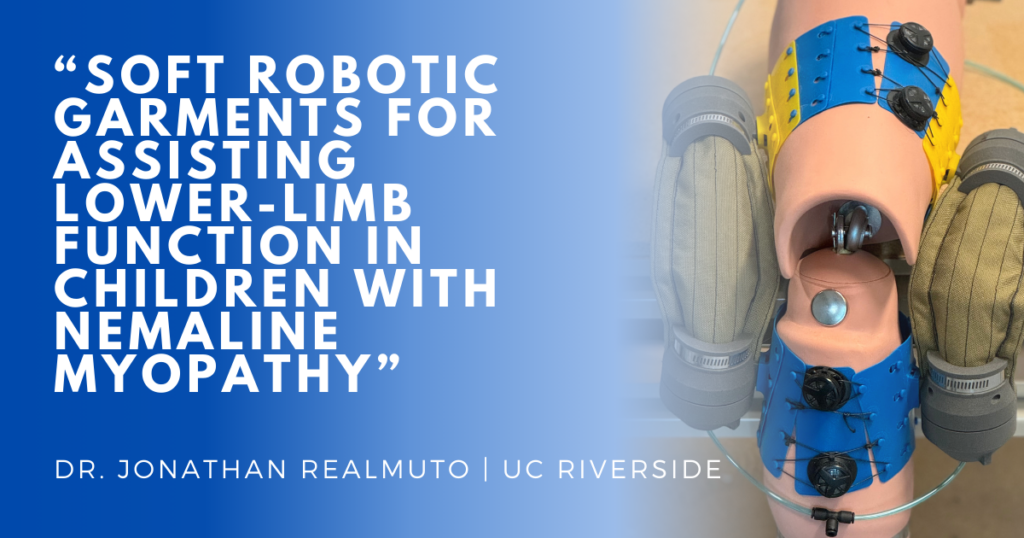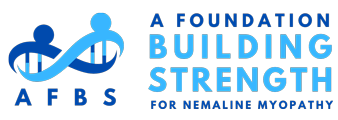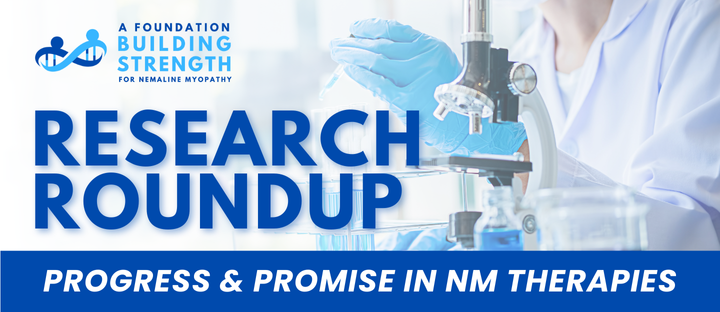A Foundation Building Strength (AFBS) is excited to share updates showcasing the significant progress being made in research projects enabled by donor support. We are witnessing meaningful advancements in NM therapies, and our efforts to develop treatments and therapies for Nemaline Myopathy (NM) continue to yield promising results.
A Refined Mouse Model for NEB-Related NM

A significant milestone has been reached with the publication of “Generation of a novel mouse model of nemaline myopathy due to recurrent NEB exon 55 deletion” in March 2025. This study, led by Dr. James J. Dowling and collaborators, addressed a critical challenge in NM research. Previous mouse models replicating the common NEB exon 55 deletion exhibited a more severe phenotype than observed in human patients due to the unintended creation of a pseudoexon leading to premature termination codons and nonsense-mediated decay.
Using CRISPR-Cas9 gene editing, the team successfully removed this pseudoexon sequence and replaced it with human intron 54 sequence containing a validated gRNA protospacer. The resulting “hmz” mice showed a 93.6% reduction in pseudoexon formation and restored stable nebulin transcript expression. These mice now exhibit key features of human NEB exon 55 deletion related NM at the physiological, histological, and molecular levels, and importantly, survive beyond the first weeks of life. This robust new model is invaluable for studying NM pathomechanisms and developing targeted therapies.
NEM6: Charting Disease Progression for Targeted Intervention

Dr. Coen Ottenheijm’s project, “NEM6: From Pathophysiology to Therapy,” is yielding crucial insights into the progression of NEM6. The team has thoroughly characterized the morphological and functional muscle changes in the KBTBD13 (R408C) mouse model across 1, 3, 9, and 18 months of age. Their findings reveal a time-dependent progressive phenotype mirroring key hallmarks observed in NEM6 patients.
Notably, they identified a pre-phenotype stage (1-month-old mice) and an overt-phenotype stage (9-month-old mice), providing a critical window for therapeutic intervention. The next phase will involve testing gene knockdown therapies (AAV-shRNA-KBTBD13, including allele-specific shRNA) at these distinct stages, utilizing the “natural history data” gathered from this study.
Advancing Gene Therapy for ACTA1-Based NM

Dr. Afrooz Rashnonejad’s research is focused on developing a gene therapy approach for NEM3 (ACTA1). The strategy involves silencing the harmful mutated ACTA1 gene and replacing it with a healthy copy modified with a resistance insert, preventing it from being targeted by the inhibitory miRNA.
Recent progress includes the comprehensive characterization of the ACTA1 mouse model (H40Y mice), which provided essential information for designing the treatment approach, including the optimal treatment age and appropriate outcome measures. Furthermore, in vitro studies using human myoblasts have demonstrated successful enhancement of the new healthy gene’s expression, paving the way for in vivo studies using the optimized genetic constructs.
Progress in Soft Robotic Garments for Mobility

Dr. Jonathan Realmuto’s team at UC Riverside has made significant strides in developing personalized soft robotic garments for lower-limb mobility assistance. They have achieved advancements in actuator design, human-robot interfaces, and computational optimization. With Institutional Review Board (IRB) approval expected in April 2025, they are poised to begin human experiments, bringing this innovative technology closer to clinical application.
Looking Ahead: Funding New Research Initiatives
AFBS is in the initial stages of approving a new round of grants to fund research focused on NM treatments and therapies. We plan to award up to five grants of $100,000 per year for up to three years for groundbreaking studies focused on:
- Small molecule research and drug screening.
- Gene-targeted therapies.
- Research addressing bulbar weakness and respiratory function.
- Development of supportive care devices and functional outcomes.
AFBS is encouraged by the steady progress in our research portfolio, knowing that each advancement has the potential to significantly impact the lives of individuals living with NM. The upcoming grant cycle promises to further expand our understanding and treatment options. We view your support as a crucial partnership in this journey. Continued donor support provides the essential resources to drive these scientific endeavors, accelerating the pace of NM treatment development.
Donate to AFBS: Your monetary gift will support critical research and provide vital resources for NM families.
Stay Connected: Sign up for our email list to receive the latest updates from AFBS and learn more about NM research. Are you an individual or a caregiver of an individual affected by NM? Fill out the AFBS Contact Survey so we can connect you with valuable resources, support, and opportunities to get involved with upcoming research studies!

